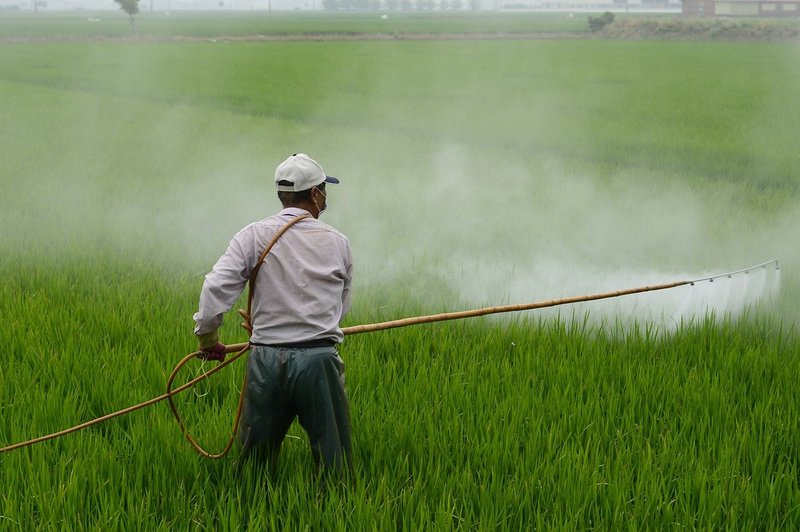Pest control exposes you to certain chemicals and pesticides that are toxic to human health. Here’s how to recognize pesticide poisoning so that you can be proactive.
Regardless of what kind, poisoning is alarming and requires quick and adequate precautions. If not addressed immediately, poisoning may result in severe health issues and may also lead to fatality.

What Is Pesticide Poisoning?
Pesticide poisoning is a type of poisoning caused by the absorption of chemicals like phosphates and carbonates, which are commonly used for pest control. These types of chemicals can create harm to humans and wildlife.
A human can be exposed to these compounds in different ways like ingestion, inhalation, and skin contact. Sadly, it is one of the most known methods of suicide, especially in developing countries.
Causes of pesticide poisoning
There are various causes of pesticide poisoning; here are the most common ones.
Accidental or suicidal poisoning
Suicidal poisoning using agricultural pesticides is one of the significant public health problems as it accounts for approximately 75% of the total suicide cases globally. On the other hand, accidental ingestion of pesticides is also a common cause, especially in kids, so proper labeling is strictly recommended.
Labels are very important and should be given attention as they will give you the necessary information about chemical products like pesticides. To learn more about this, you can give a quick read to this article on why is it important to read the pesticide label first.
Occupational exposure
Pesticides are commonly used in many industries, and their extensive use may result in a higher risk of pesticide illnesses. Take workers in retail stores as an example as they have prolonged and frequent exposure to commercially available pesticides.
Residential exposure
This cause is brought about by long-term, low-level exposure to pesticides. In this case, poisoning is characterized by exposure to pesticide residues in food, food materials, air, plants, soil, and animals.
Signs and symptoms of pesticide poisoning
- Pesticide poisoning affects various parts of the body.
- It can affect the lungs and cause breathing problems.
- The nervous system is also affected, which is exhibited through anxiety, convulsions, headache, dizziness, and coma.
- For the skin, pesticide poisoning can cause irritation, swelling/redness, and blue fingernails and lips.
- Excessive urination can also be a sign of poisoning.
- You can also observe other visible signs like smaller pupil size, more tears, and increased salivation.
- A person who was poisoned with a pesticide may also experience diarrhea, loss of appetite, nausea, vomiting, and abdominal cramps.
- Experiencing muscle spasms is also possible.
- Lowered heart rate is a severe sign of pesticide poisoning.
Treatment For Pesticide Poisoning
There are different treatments depending on the type or class of pesticide. However, there are basic techniques to apply to the most acute poisonings.
- The first thing that you must do is remove the person from the source of pesticide exposure in order to prevent further poisoning. It is also essential that the person who will attend to the patient takes the necessary safety precautions to avoid contact exposure.
- When the pesticide is spilled on the patient’s clothes, remove them immediately. Also, quickly wash the pesticide off the patient’s body using cold water and soap.
- If the pesticide comes into contact with the eyes, you should rinse the eyes with clean, running water for at least 15 minutes.
- In case of skin burn caused by pesticide, take note of the following steps:
- Keep the damaged part of the skin under running tap water.
- Do not remove anything that’s stuck on the burnt skin.
- Restrict from applying ointment or lotion.
- Never break blisters of the peel of loose skin.
- Apply sterile dressing and cover the damaged skin thoroughly.
If there is a swallowing incident:
- If the patient is unconscious, lay them on the side and check for breathing.
- If not, do mouth-to-mouth but make sure to use a piece of cloth to prevent you from contamination.
- Check the label of the pesticide for vomiting instructions.
- If the patient can drink, give lots of clean water as immediately as possible.
- Take the patient to the hospital and take the label of the pesticide with you.
For breathing of pesticide incidents:
- Take the patient away from the area of exposure.
- Loosen the person’s clothing for easier breathing.
- Make the patient sit with the head and shoulders raised.
- If unconscious, lay him on the side and ensure breathing.
- Do mouth-to-mouth if the person is not breathing.
- Seek medical help and take the pesticide label with you.
Also, for more safety precautions, here is an article on how to prevent pesticide poisoning that can help you.
Conclusion
Using the above mentioned information, you are now aware of how to recognize pesticide poisoning. The knowledge you gain will lead to a safer and proactive use of pesticides, whether in your home, building, or vast areas like farms.
